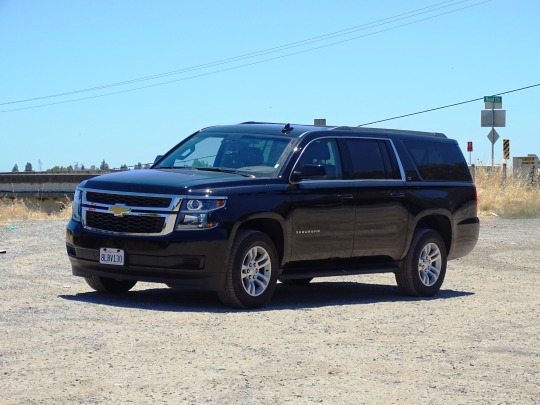#automobile market
Photo










Chevrolet officially entered the automobile market on November 3, 1911, in competition with the Ford Model T.
#Chevrolet#automobile market#3 November 1911#anniversary#US history#engineering#Torrington Cruise Night#original photography#travel#vacation#USA#Bowling Green#National Corvette Museum#Chevrolet Corvette#Chevy#Chevrolet Tahoe#Chevrolet Suburban#Chevrolet Camaro#Chevrolet Nova#Chevrolet Impala#outdoors#indoors#tourist attraction#landmark#Wyoming#Kentucky#California#South Lake Tahoe#Yountville
40 notes
·
View notes
Text
Automotive Market: Trends & Analysis
The global automotive market stands as one of the most significant sectors in the world, representing a cornerstone of the global economy. The market is dynamic, constantly evolving with technological advancements, changing consumer preferences, and regulatory shifts. As of 2024, the automotive industry is navigating through a transformative phase, influenced by the push toward sustainability, advancements in electric vehicles (EVs), and the integration of smart technologies. This blog provides an in-depth analysis of the automotive market, covering its size, growth, key players, prevailing trends, and challenges, culminating in a forward-looking conclusion.

Market Size, Share, and Growth
As of 2023, the global automotive market was valued at approximately USD 3.7 trillion, with projections indicating a steady growth trajectory, anticipated to reach USD 5 trillion by 2030. This growth is primarily driven by the increasing demand for electric vehicles (EVs), technological advancements, and the resurgence of the global economy post-pandemic.
In terms of market share, the automotive market is segmented into passenger vehicles, commercial vehicles, and electric vehicles (EVs). The passenger vehicle segment dominates, accounting for nearly 60% of the market share. However, the electric vehicle segment is witnessing the fastest growth, with a compound annual growth rate (CAGR) of 20% from 2024 to 2030. This surge in EV adoption is fueled by heightened environmental awareness, government incentives, and advancements in battery technology.
The commercial vehicle segment, while growing at a slower pace, remains crucial, particularly in emerging economies where infrastructure development is a priority. The Asia-Pacific region leads the market, contributing to over 40% of the global automotive sales, followed by North America and Europe.
Market Trends
Several key trends are shaping the future of the automotive industry, each contributing to the sector's evolution and expansion:
Electrification and the Rise of EVs: The transition from internal combustion engines (ICE) to electric vehicles is one of the most significant trends in the automotive industry. Governments across the globe are setting ambitious targets for reducing carbon emissions, leading to increased investments in EV infrastructure and incentives for EV adoption. Major automakers like Tesla, Toyota, and Volkswagen are at the forefront of this shift, introducing a range of electric models aimed at both the mass market and premium segments.
Autonomous Driving and Connected Vehicles: The development of autonomous vehicles (AVs) is progressing rapidly, with companies like Waymo, Tesla, and GM’s Cruise making significant strides in self-driving technology. In parallel, the integration of connected vehicle technologies is enhancing vehicle safety, efficiency, and user experience. The Internet of Things (IoT) enables real-time communication between vehicles, infrastructure, and other devices, paving the way for smarter, more efficient transportation systems.
Shared Mobility and Changing Ownership Models: The concept of vehicle ownership is evolving, with a growing trend toward shared mobility solutions. Ride-hailing services, car-sharing, and subscription models are gaining popularity, especially in urban areas. Companies like Uber, Lyft, and Zipcar are leading this shift, offering flexible alternatives to traditional car ownership, which is particularly appealing to younger, urban populations.
Sustainability and Green Technologies: The automotive industry is increasingly focused on sustainability, with a strong emphasis on reducing carbon footprints and utilizing green technologies. Beyond electrification, this includes the adoption of lightweight materials, improved fuel efficiency, and the development of hydrogen fuel cell vehicles. Automakers are also investing in circular economy practices, such as vehicle recycling and the use of renewable energy in manufacturing processes.
Digital Transformation and E-Commerce: The digitalization of the automotive industry is reshaping how vehicles are designed, manufactured, sold, and serviced. E-commerce platforms are playing a crucial role in the automotive retail space, with more consumers opting to purchase vehicles online. This trend is accelerated by the growing influence of digital marketing, virtual showrooms, and online customer support.
Key Market Players and Their Impact
The automotive market is dominated by a few key players, each with a significant share in the global market. These companies are instrumental in shaping industry trends and driving innovation.
Toyota Motor Corporation: Toyota remains the largest automaker globally, with a market share of approximately 10%. The company's strong emphasis on hybrid technology and its gradual transition to electric vehicles have solidified its leadership position. Toyota's global sales in 2023 exceeded 9.5 million units, with significant contributions from its best-selling models like the Corolla and the RAV4.
Volkswagen Group: Volkswagen holds a market share of around 8%, with a robust portfolio that includes brands like Audi, Porsche, and Bentley. The company is heavily invested in electrification, with plans to produce over 50 different electric models by 2025. Volkswagen's ID.4 and ID.3 models are gaining traction in key markets, including Europe and China.
Tesla, Inc.: Tesla continues to be a dominant force in the electric vehicle segment, with a market share of about 3% in the overall automotive market but a commanding 20% share in the global EV market. Tesla's Model 3 and Model Y are among the best-selling electric vehicles worldwide, and the company's focus on innovation and battery technology sets it apart from traditional automakers.
General Motors (GM): GM has a market share of approximately 6%, with a strong presence in North America and China. The company is transitioning toward an all-electric future, with plans to phase out internal combustion engines by 2035. GM's Chevrolet Bolt EV and the upcoming Hummer EV are key models in its electric vehicle lineup.
Hyundai-Kia Automotive Group: With a market share of around 7%, Hyundai-Kia is rapidly expanding its electric vehicle portfolio, aiming to launch 23 new EV models by 2025. The group's focus on hydrogen fuel cell technology, alongside traditional battery electric vehicles, positions it uniquely in the market.
Market Challenges
Despite its robust growth prospects, the automotive market faces several significant challenges:
Supply Chain Disruptions: The global semiconductor shortage has severely impacted automotive production, leading to delays and increased costs. The reliance on a complex, global supply chain makes the industry vulnerable to disruptions caused by geopolitical tensions, natural disasters, and pandemics.
Regulatory Hurdles: Stringent environmental regulations and safety standards vary significantly across regions, creating challenges for automakers in terms of compliance and cost management. The shift towards electric vehicles also requires substantial investments in infrastructure, which is progressing at different rates globally.
Technological Integration: The rapid pace of technological advancements presents a double-edged sword. While it drives innovation, it also requires significant R&D investments and poses challenges in integrating new technologies into existing platforms. Moreover, the race to develop autonomous vehicles is fraught with legal, ethical, and safety concerns that need to be addressed before widespread adoption can occur.
Consumer Adoption Barriers: While the demand for electric vehicles is growing, barriers such as high upfront costs, limited charging infrastructure, and range anxiety continue to hinder widespread adoption, particularly in developing markets. Additionally, the shift in ownership models, from traditional to shared mobility, requires a cultural change that may take time to materialize.
Conclusion
The automotive market is at a pivotal juncture, with the convergence of electrification, autonomous driving, and digitalization driving its transformation. The industry's future will be shaped by how well it navigates the challenges of supply chain disruptions, regulatory pressures, and technological integration. Key players like Toyota, Volkswagen, and Tesla are leading the charge, but the market remains highly competitive, with new entrants and evolving consumer preferences continually reshaping the landscape. As we look ahead, the shift towards sustainable and smart mobility solutions is set to redefine the automotive industry. Companies that can innovate and adapt to these changes will thrive, while those that resist will face increasing challenges. Ultimately, the automotive market's trajectory will be determined by its ability to balance growth with sustainability, ensuring that the industry continues to drive global economic progress while addressing the environmental and societal challenges of the 21st century.
#Automobile Market#Automobile Market Share#Automobile Market Size#Automobile Market Forecast#Automobile Market Report
0 notes
Text
Driving Success: Navigating the Automobile Industry with Strategic Insights
Introduction:
The automobile industry, a powerhouse of innovation and evolution, continues to shape the global landscape of transportation. We embark on a comprehensive journey through key aspects of the automobile sector, analyzing industry trends, market dynamics, and strategies for successful business entry.
Unveiling the Automobile Industry: A Holistic Overview
In the first section, we provide readers with a broad understanding of the Automobile Industry. From its historical roots to the present, explore how the industry has transformed, adapting to technological advancements, environmental concerns, and shifting consumer preferences.
Navigating Sectors: The Complex Web of the Automobile Industry
Delve into the intricacies of the various sectors that compose the Automobile Industry. From manufacturing and design to marketing and aftermarket services, this section unravels the layers of the automobile sector, showcasing its multifaceted nature.
Analyzing the Automobile Industry: Trends and Insights
Embark on a journey of discovery as we conduct an Automobile Industry Analysis. Explore the latest trends, technological breakthroughs, and market dynamics that are steering the industry toward the future, providing businesses and enthusiasts alike with valuable insights.
Driving the Market: Understanding the Automobile Market Dynamics
Shift gears and explore the nuances of the Automobile Market. From consumer behavior to economic influences, this section dissects the factors that drive market demand and supply, shaping the ever-changing landscape of automotive commerce.
The Competitive Race: Unpacking Automobile Market Share Trends
Zoom in on the competitive aspect with a focused exploration of Automobile Market Share trends. Understand how industry giants and emerging players vie for market dominance, and how market share dynamics influence business strategies and consumer perceptions.
Sizing up the Automobile Market: Exploring Magnitude and Impact
Take a macroscopic view of the industry with a discussion on Automobile Market Size. Explore the sheer scale of the market, its economic impact, and the global interplay of forces that contribute to its continuous expansion.
Crafting the Roadmap: Successful Automobile Business Entry Strategies
Concluding the journey, we provide a roadmap for entrepreneurs and businesses looking to enter the industry with the section on Automobile Business Entry Strategy. From market research to strategic planning, discover the key elements for a successful and sustainable entry into the competitive world of automobiles.
Conclusion:
In the ever-evolving world of automobiles, staying ahead requires a nuanced understanding of the industry's past, present, and future. This article aims to be a comprehensive guide for enthusiasts, industry professionals, and aspiring entrepreneurs, offering valuable insights into the intricacies of the automobile industry and strategies for navigating its diverse landscapes.
0 notes
Text
ohhh there’s something i really want to hear about. can you guys tell me when the last time you laughed laughed was? like the kind of laughter from your belly that you start and can’t stop. what was it about?
#mine is sooo stupid and tipsiness might’ve been a contributing factor#but a few weeks ago - completely out of the blue. i cannot stress enough how totally unrelated to anything this was#my friend went and i quote ‘the automobile market is in shambles’#and i. lost it.#anyway please let me hear about yours :’)
56 notes
·
View notes
Text




Petaling Jaya, Malaysia (2) (3) (4) by 张越东
#around the neighborhood#roaming the streets#laundry#automobiles#people#food stalls#market#malaysia#selangor
13 notes
·
View notes
Text
F100 rear glass install
#mercury#lincoln#ford#flm boyz#classic cars#ford motor co#custom trucks#billet rims#bullnose f150#car show#dentside f100#bumpside f100#classic automobiles#marketing#funny#35mm color film
13 notes
·
View notes
Photo

"Portuguese-American communities in California. Main Street (East 14th at Callan) in San Leandro.". With a rare Graham Hollywood automobile parked at the curb lower right. Photographed April 1942 by Russell Lee for the Foreign Information Service of the U.S. Office of Coordinator of Information.
#vintage#1940s#wartime#street scene#automobiles#drug store#chinese restaurant#chop suey#market#liquor store#butcher#WWII#cafe#bank#shoppers#donuts#jeweler#dentist#cleaners
88 notes
·
View notes
Text
#CHEYOLL#cheyoll sharedpowerbank#cheyoll china#cheyoll company—https://sharedpowerbank.net/about-us/#automobile#automotive#business#shared power bank market
3 notes
·
View notes
Text
Electric Vehicle Fast-Charging System Market to Reach $33.15 Billion by 2033 | BIS Research
As per the BIS Research report, the Electric Vehicle Fast-Charging System Market is projected to reach $33.15 Billion by 2033 from $8.39 Billion in 2023, growing at a CAGR of 14.73% during the forecast period 2023-2033.
#Electric Vehicle Fast-Charging System Market#Electric Vehicle Fast-Charging System Market Report#Electric Vehicle Fast-Charging System Market Research#Electric Vehicle Fast-Charging System Market Forecast#Electric Vehicle Fast-Charging System Market Analysis#Electric Vehicle Fast-Charging System Market Growth#Electric Vehicle Fast-Charging System Industry#Automotive#Automobile#BIS Research
2 notes
·
View notes
Text




















Chevrolet officially entered the automobile market on November 3, 1911, in competition with the Ford Model T.
#Chevrolet#automobile market#3 November 1911#anniversary#US history#engineering#Torrington Cruise Night#original photography#travel#vacation#USA#Bowling Green#National Corvette Museum#Chevrolet Corvette#Chevy#Chevrolet Tahoe#Chevrolet Suburban#Chevrolet Camaro#Chevrolet Nova#Chevrolet Impala#outdoors#indoors#tourist attraction#landmark#Wyoming#Kentucky#California#South Lake Tahoe#Yountville
1 note
·
View note
Text
The Global Automobile Market: Comprehensive Analysis and Future Outlook
The global automobile market, a cornerstone of modern economies, is a complex and dynamic sector influenced by technological advancements, regulatory changes, and shifting consumer preferences. As we navigate through 2024, it is essential to understand the current landscape, including market size, share, and growth; prevailing trends; key market players; and the challenges that could shape the future of this industry.
Automobile Market Size, Share, and Growth
As of 2023, the global automobile market was valued at approximately $3.8 trillion. The market encompasses various segments, including passenger vehicles, commercial vehicles, electric vehicles (EVs), and luxury cars. Passenger vehicles dominate the market, accounting for about 60% of total sales, followed by commercial vehicles at 25%, and the rapidly growing electric vehicle segment at 10%.
Growth Projections
The market is projected to grow at a compound annual growth rate (CAGR) of 4.5% from 2024 to 2030, driven by several factors, including technological advancements, increased disposable incomes, and a rising focus on sustainability. The electric vehicle segment, in particular, is expected to witness a staggering CAGR of 26% during the same period, underscoring the global shift towards greener transportation solutions.

Automobile Market Trends
Electrification and Sustainability
One of the most significant trends in the automobile market is the shift towards electrification. Governments worldwide are implementing stringent emission regulations, encouraging automakers to invest heavily in electric vehicle technology. Major players like Tesla, Volkswagen, and General Motors are leading the charge, with ambitious plans to increase their EV offerings. For instance, Volkswagen aims to produce 1.5 million EVs annually by 2025.
Autonomous Driving
The development of autonomous driving technology is another critical trend. Companies such as Waymo, Tesla, and Uber are making significant strides in this area, with various levels of autonomous vehicles already in testing or limited deployment. The adoption of autonomous vehicles promises to revolutionize transportation, potentially reducing accidents, improving traffic flow, and providing new mobility solutions.
Connectivity and Digitalization
The integration of advanced digital technologies, including 5G, the Internet of Things (IoT), and artificial intelligence (AI), is transforming the automobile industry. Connected cars offer enhanced safety, entertainment, and navigation features, creating new revenue streams for automakers through data-driven services. For example, BMW's ConnectedDrive platform provides real-time traffic information, remote services, and a suite of other digital offerings.
Shifts in Consumer Preferences
Consumers are increasingly prioritizing sustainability and efficiency in their vehicle choices. There is a growing demand for hybrid and electric vehicles, as well as smaller, more fuel-efficient cars. Additionally, the rise of ride-sharing and car-sharing services, such as Uber and Lyft, is altering traditional car ownership models, particularly among younger demographics.
Key Market Players
Tesla Inc.
Tesla, the leader in the electric vehicle market, holds a significant market share of the global EV market, estimated at around 17%. Known for its innovation and cutting-edge technology, Tesla continues to expand its product line and production capabilities. In 2023, the company reported revenue of $81.5 billion, a testament to its strong market position and consumer demand.
Toyota Motor Corporation
Toyota remains a dominant player in the global automobile market, with a market share of approximately 10%. The company's commitment to hybrid technology, as seen in its popular Prius model, and its expanding lineup of electric vehicles position it well for future growth. Toyota's revenue for 2023 was reported at $275 billion.
Volkswagen Group
Volkswagen Group, with its diverse portfolio of brands including Audi, Porsche, and VW, holds a substantial market share of around 12%. The company's aggressive push towards electrification, exemplified by its ID. series, is a key part of its strategy to lead the EV market. Volkswagen reported revenue of $290 billion in 2023.
General Motors
General Motors (GM), with a market share of about 8%, is another major player making significant investments in electric and autonomous vehicle technologies. GM's ambitious goal to phase out gasoline and diesel-powered cars by 2035 highlights its commitment to sustainability. The company reported a revenue of $156 billion in 2023.
Automobile Market Challenges
Supply Chain Disruptions
The global automobile market faces ongoing supply chain disruptions, exacerbated by the COVID-19 pandemic and geopolitical tensions. Shortages of key components, such as semiconductors, have led to production delays and increased costs. Automakers are now looking to diversify their supply chains and invest in domestic manufacturing capabilities to mitigate these risks.
Regulatory Hurdles
Stringent emission regulations and varying standards across different regions pose a challenge for automakers. Compliance with these regulations requires significant investment in research and development, which can strain financial resources, especially for smaller manufacturers. Additionally, the regulatory landscape is continually evolving, requiring companies to remain agile and adaptable.
High Development Costs
The development of electric and autonomous vehicles involves substantial financial investment. High costs associated with battery technology, software development, and infrastructure deployment can impact profitability, particularly for companies in the early stages of these transitions. Collaboration and partnerships are emerging as strategies to share these burdens and accelerate innovation.
Consumer Acceptance
Despite growing interest in electric and autonomous vehicles, consumer acceptance remains a hurdle. Concerns about range anxiety, charging infrastructure, and the safety of autonomous driving technology can slow adoption rates. Education and robust marketing efforts are necessary to address these concerns and build consumer confidence.
Conclusion
The global automobile market is at a pivotal juncture, driven by technological advancements, shifting consumer preferences, and regulatory pressures. The market's future growth will be shaped by its ability to navigate supply chain disruptions, meet regulatory requirements, and manage the high costs of innovation. Key players like Tesla, Toyota, Volkswagen, and General Motors are leading the way with significant investments in electric and autonomous vehicles, setting the stage for a more sustainable and connected future.
#Automobile Market#Automobile Industry#Automobile Sector#Automobile Market Size#Automobile Market Report
0 notes
Text
youtube
AI used for good, four days before San Francisco 1906 earthquake. I worked for some companies on Market Street when I lived there many years ago. Not this many years ago, circa early 1990s for me. 
Fascinating time for different modes of transportation.
#ai film restoration#san francisco#1906#market street#modes of transportation#horses#buggies#automobiles#cable cars#pedestrians#history#denis shiryaev#Youtube
2 notes
·
View notes
Text
Dive into the thriving landscape of India's auto parts industry, witnessing a remarkable 32.8% growth. From cutting-edge innovations to sustainable practices, discover the forces propelling it to $200B.
0 notes
Text
Bonus Content: Automobile Marketing
One of the things that’s been mentioned on here a little bit is Holden, a now-defunct car brand in Australia.
Here’s a link to one of their advertising campaigns in the 1970s. Kind of an earworm, so be warned.
So that nobody thinks I’m making fun of Australia, here’s the equivalent campaign for Chevrolet in the USA… (video on Youtube)
youtube
6 notes
·
View notes
Text




Untitled (2) (3) (4) by Fred Feng
#people#city life#market stalls#public transportation#on a bus#boats#waterways#automobiles#thailand#chiangmai
12 notes
·
View notes